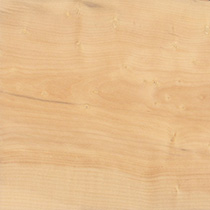
Muninga
Muninga wood is a unique and versatile timber, derived from the species Pterocarpus angolensis (Leguminosae). Its sapwood is clearly defined from the heartwood, with grey or yellow tones. The heartwood can feature a wide range of colours, from golden-brown, through chocolate-brown to purple-brown, with dark irregular reddish streaks. The grain of the timber can range from straight to interlocked, and has a medium to coarse texture. Muninga wood can also have attractive striped, wavy or mottled figure, although it lacks gloss. Small white spots may also occur in the wood.
Muninga is a highly versatile timber, and can be used for furniture, joinery and turnery. If available from sustainable and legal sources, you can use our system to be connected with suppliers of Muninga.
- Spec:
- FAQ's:
- Uses:
- Links:
Material Type:
Hardwood
Also Called:
Mninga, Brown African Padauk, Bloodwood, Mukwa, Kajat, Kiaat, Ambila,
Durability Notes:
Muninga wood is a very durable timber.
Seasoning:
The drying and seasoning of Muninga is dependant on a number of factors; the speed in which it is processed after felling and logging, the method of drying and the specific kilns or location (if air dried). Generally the care taken by those processing the wood will have an impact on its drying and seasoning. As an overview; Muninga - is easy to dry and shows very little impact on the grade and quality of the wood. Muninga has exceptional stability in service. Please note that all wood is liable to move when in service plus there can be dimensional change. The extent of this will depend on; the stability of the species itself, the conditions it is exposed to, the coating, decoration and protection. You will find more information about the suitability of this wood, for any proposed application, by using our interactive system and the filters shown.
Properties:
Muninga; a heavy, dense wood which resists wear. It has very low stiffness, low resistance to shock loads, high crushing strength and medium bending strength. Muninga works well with hand and machine tools but does have a blunting effect on tooling. Pre-drilling is recommended for nailing. The wood turns, moulds, carves, glues and sands well and responds well to stains and polishes.
Typical Uses:
Furniture, Cabinets, Flooring, Musical Instruments, Boat Building, Carving, Paneling, Joinery, Veneers.
Moisture Content:
Guide - 10-18% for KD (+/- 2%)
Commonly asked questions about Muninga Wood
Is Muninga a hardwood or a softwood? Muninga is a hardwood. It is the same for; is Muninga hardwood or softwood? - Muninga is a hardwood.
Most groups/families of species share the same characteristics but this normally relates to their life as plants. Individual species do not always share the same characteristics as their relatives, in terms of the wood. Many factors influence how we use the wood and what we use it for, including where it grows, how it is forested, how it seasons/dries, etc. The answers to the following common questions, therefore relate to this particular species/wood and not the Muninga family as a whole. Even more specific – our answers relate to the wood (as we know it) in its form as a useable resource.
What colour is Muninga? Muninga can be described as brown, dark brown, dark red, red, orange,
Is Muninga good for outdoor use? or is Muninga good for exterior use? Muninga is most suited for exterior/external use. Muninga can be used as an exterior/external timber (without treatment).
Whether the wood is naturally durable or not we would still recommend that it is decorated and/or coated with a suitable product to provide protection and/or maintain its appearance. This even applies when using the wood internally as, even subtle, changes in temperature or humidity will affect the wood. This will depend on the application/purpose of the wood and the user’s desired appearance. We also recommend that a recoating, care and maintenance programme is adhered to, for the life of an exterior wood. Wood cannot rot if it is kept dry – coatings and decoration can provide this protection. All of that said there are many durable timbers that are often left to weather naturally and will last for many years untreated/coated – movement and visual changes will occur but this is sometimes the desired effect. All wood is hygroscopic (it 'wants' to be in tune with its environment) it will therefore take on water from moisture in the air (or when directly exposed to or submerged in water) and ‘release it’ when dry or exposed to heat. This, inevitably, results in movement and dimensional change. For more about moisture in wood please click here - Moisture in wood
WooduWeigh is a real time calculator that uses a wood density algorithm that allows you calculate the weight of any quantity of Muninga timber. Visit Wooduweigh
If you would like to buy Muninga or have Muninga ready to sell then please visit the wood trading section powered by Woodutrade, where you can make timber contacts worldwide. Visit Woodutrade






